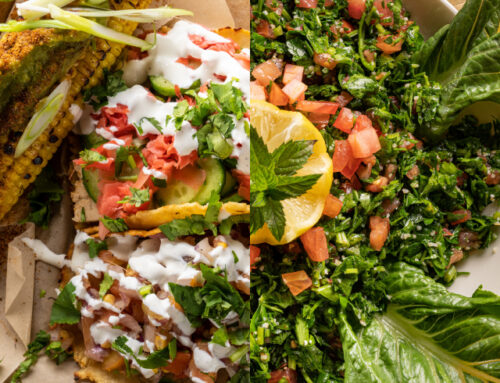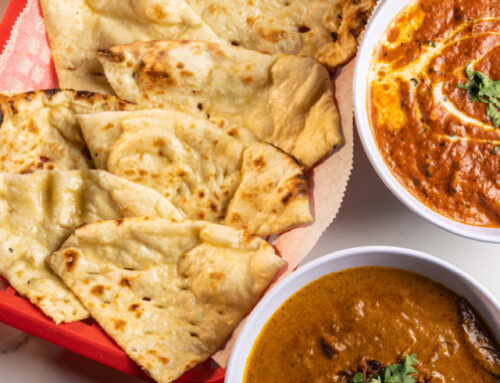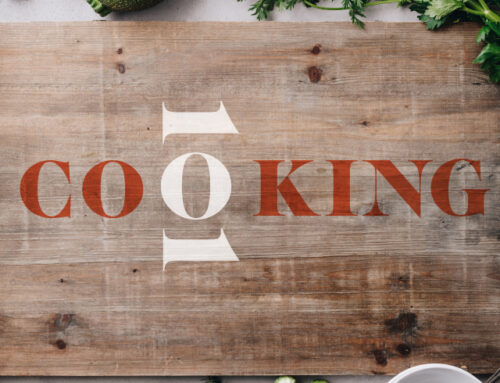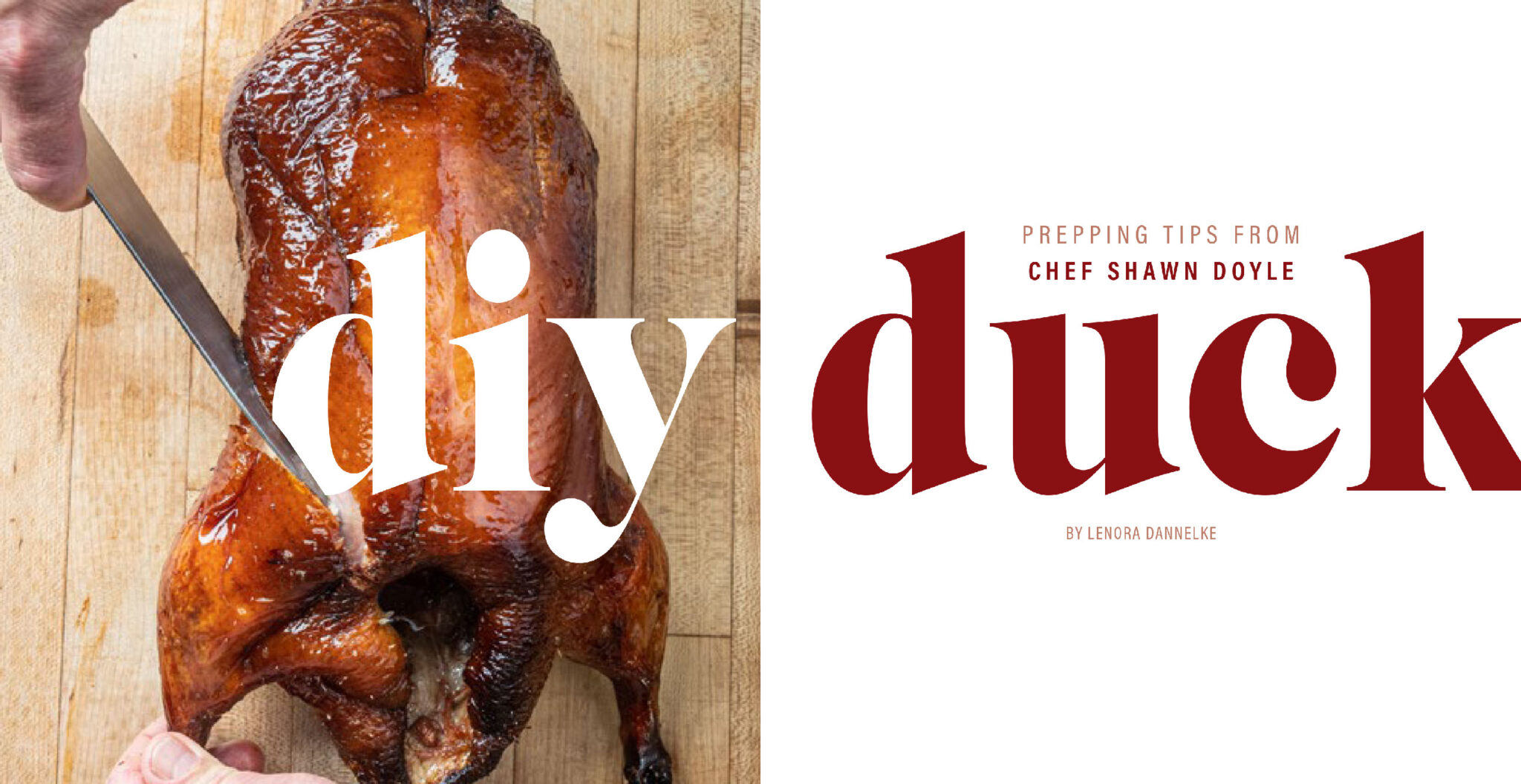
Duck,
a premium poultry typically associated with fine dining, offers surprising approachability. “The duck in itself tastes so good, as long as you season it,” says Shawn Doyle, Chef/owner of Savory Grille in Macungie. “When I do duck breast, most of the time I just use salt-pepper, maybe some [Chinese] five spice—but not a lot.” Rather than masking the rich flavor of the juicy bird, he “changes all the accouterments to it,” drawing from a wide range of ethnic cuisines. To emphasize its red meat-like character, cooking the boneless breast to slightly above medium rare is recommended.
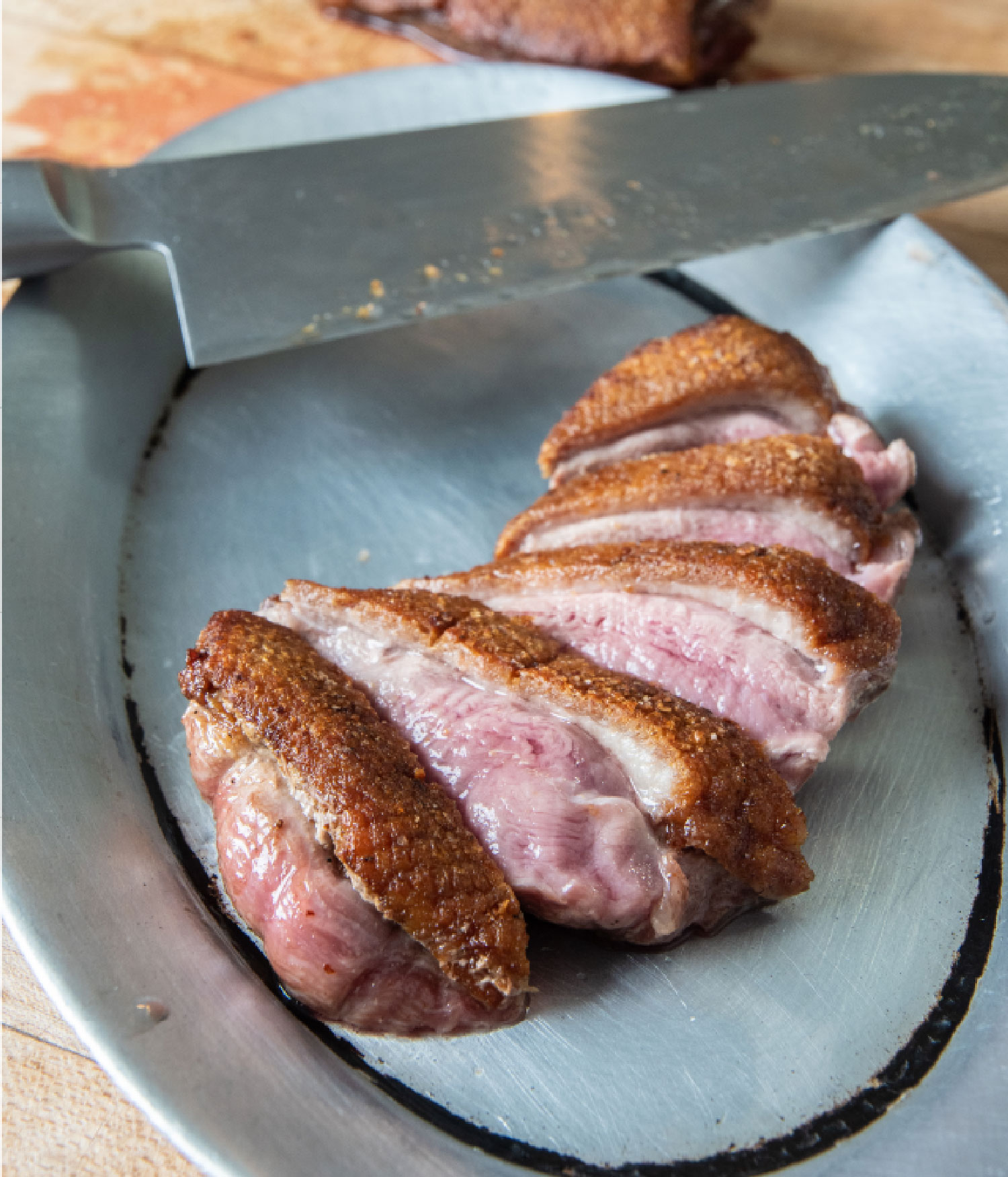
Duck to your door
In a world with limited duck-buying choices, online shopping at TASTYDUCK.COM fulfills nearly every delicious duck-centric fantasy, from whole birds or favorite parts to smoked breasts and ready-made confit. A premier purveyor for four generations, Joe Jurgielewicz & Son is known for humanely raised ducks, all hormone- and antibiotic-free. Products shipped in insulated boxes from their Shartlesville headquarters arrive at Lehigh Valley locales in just one day. Most notable among their new Meal Kits is the dry aged ready-to-cook (easy instructions provided) Peking duck, paired with hearty hoisin sauce and sweetly chewy bao buns for a traditional Chinese feast—at home.

Of course, Doyle’s ever-evolving menu always features one or (usually) two varied duck dishes that are not beyond the reach of home cooks. Grinding leg meat—mainly thighs because they contain less sinew—produces the basis of handcrafted duck sausage. Confit—a term that means to cook something in its own fat—legs are a classic preparation that can be made in a crockpot. A salt and spice cure unleashes an incredible aroma during an oh-so-slow braise in duck fat. The meltingly tender meat can then be shredded and scattered over a salad, mixed with ricotta and kale for ravioli stuffing, or whatever your appetite suggests. Doyle also reports great results from swapping duck breast for beef to create smoky duck pastrami. “It’s so versatile—you can make anything with duck.”
While a whole roast duck brings drama to the table, this seemingly simple dish can be tricky to execute properly. “The breast cooks first and the legs cook last. That’s why I like separating them.” For example, when making Duck à l’Orange, he’ll re-roast confit legs and pan the breasts “so everything is at the right temperature and has the right textures,” Doyle explains. That sounds just ducky to us.

panned duck breast
INGREDIENTS
- 2 (6 oz.) boneless duck breasts, skin-on
- Kosher salt and fresh ground black pepper
DIRECTIONS
Place duck breasts on a clean work surface, skin-side up. Using a sharp knife, score the skin in a crosshatch pattern, going through half the thickness of the skin but not through to the meat. (This allows the fat to escape during cooking). Lightly season the skin with kosher salt.
Preheat a heavy pan over low heat. Add the duck breasts, skin-side down, and cook without moving for about 10 minutes until nearly all the fat is extracted and the skin is golden brown and crispy. Season breasts with kosher salt and fresh ground black pepper. Pour off accumulated fat from pan.
Increase heat to medium, turn over the duck breasts and cook the flesh side for 3 to 4 minutes. The meat should feel slightly springy when pressed if you want it cooked to medium (which is recommended). When ready, remove to a plate and set aside to rest for 5 minutes.
Slice breasts at an angle and arrange, either shingled or fanned, on serving plates. Accompany with your favorite fruit or a red wine-based sauce as desired.
Serves 2
As seen in the Winter/Spring 2021 Issue
Click to Visit Our Advertisers

